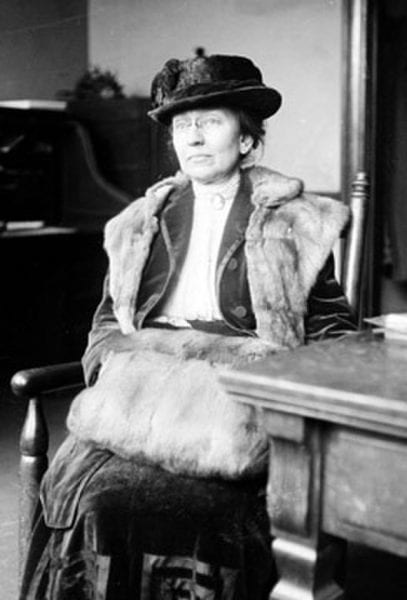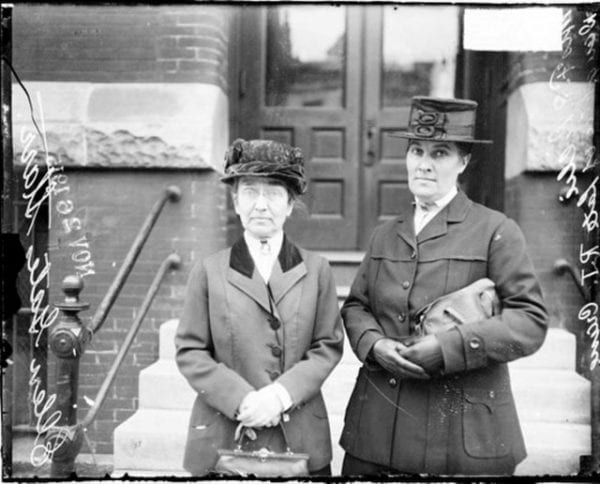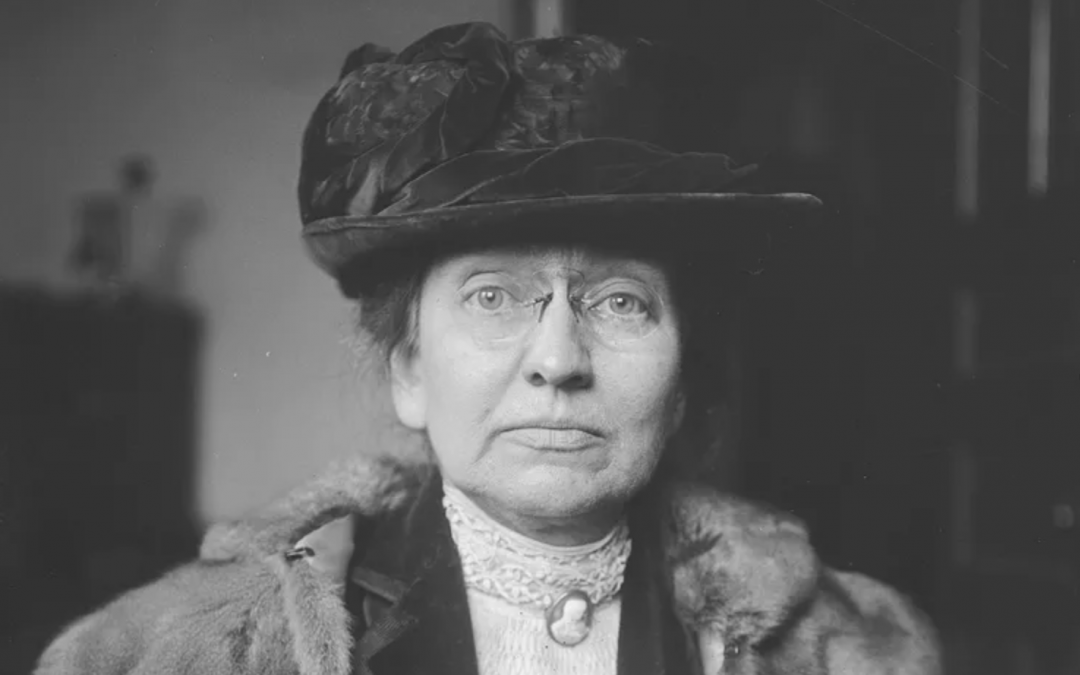The settlement movement in America aimed to improve the living conditions of the poor, while allowing more educated individuals to practice social science. It played a central role in the introduction of empirical methods in sociology, and allowed for the study of the broader causes of poverty, and how to address them. Settlement houses functioned as the intersection of science and sympathy, using social science to improve society as a whole and unite those with different backgrounds. While the movement started in Europe, it spread when two women visited Europe and wanted to bring the settlement movement to America.
Hull House is the most prominent settlement home in America, and was founded after Jane Addams and Ellen Gates Starr met with many social scientists in Europe, and were inspired by the settlement movement. Hull House provided child care, education, and social opportunities for poorer immigrants, who often lacked access to basic necessities. It also offered programs in arts and other domestic activities. Addams takes the spotlight when regarding Hull House and social science in America and is a well-known historical name, while Starr is understudied. While both Addams and Starr were driven sociologists working at the same place at the same time, they had distinct pursuits within the field. Starr is overlooked as Addams’ less palatable, more intense counterpart. Despite this, she contributed many important ideas and did important work for movements at the time.

Ellen Gates Starr, 1914. Source: Wikimedia Commons (Public Domain)
Starr’s beliefs around democracy aligned with many sociologists at the time. Figures such as John Dewey and Jane Addams wrote about extending the concept of democracy beyond a political concept and into a social ethic. The premise was that each member of a democracy should seek out diverse experiences to understand the other members of the democracy. It did not encourage an assimilation into some general group, but instead a general compassion. Unlike Dewey and Addams, Starr’s beliefs regarding democracy led her to becoming a staunch socialist. It was clear to her that if one truly had compassion for other members of the democracy there would not be such blatant unfair distribution of labor and of capital. [2, Why I Am A Socialist]
Starr’s views centered around the definition of art, and its central role in the human experience. Her theories of art, beauty, and aesthetics lead her to socialism and an active presence in the labor rights movements of the time. Starr’s argument for socialism via art is that beauty is a necessity for all, not a luxury for the few. Without access to the appreciation and creation of art, one can not live a meaningful life. Starr, inspired by William Morris, claimed that there was essentially no difference between ‘fine arts’ and ‘arts and crafts’ because all art is the product of work done with pleasure. However, in order for someone to be able to partake in the creation or appreciation of art, they needed to be able to work for pleasure instead of solely to meet their needs. [2, Art and Democracy]
She was a member of the Women’s Trade Union League (WTUL) and participated in many strikes, in addition to writing to the mayor, giving speeches, and being arrested multiple times in her pursuit of improving the lives of the working class. While participating in protests, her colleagues often found her company to be unpleasant as she was extremely driven and too intense. However, Starr felt strongly that she had to do all she could to improve the lives of others, as opposed to just discussing and theorizing about the causes for the social and economic inequity. Moreso than just participating in strikes to improve working conditions, as an affluent, educated woman, Starr was exemplifying her beliefs in how to practice democracy.
An interesting view of Starr was the importance of art during the socialist democratic revolution. To reiterate, Starr believed that the appreciation and creation of art were innate human drives, that where people have joy they create something beautiful and that that something is art. However, the society that Starr saw did not allow people to create with joy, and needed to be changed. Starr sought to answer the questions of, “Why do we trouble at all about trying to produce or encourage the production of art under present adverse circumstances? Why not devote all our energies to making life free, happy, and livable, and leave art to take care of itself, as it then will do?” Essentially, she wanted to justify the joy of art when life itself was not joyous. [2, Art and Labor]
Her conclusion is that art is not a simple joy or luxury, but that without art a person’s soul suffers and they are unable to have a full human experience. Bringing about her socio democratic ideal world would be a long and laborious process, spanning generations, and if art was not actively pursued during this time, then all of those people would suffer, and live and die unfulfilled. Even at Starr’s time where most people do not have the ability to create and work with joy, some individuals who could would be able to craft a more livable present for their peers. [2, Art and Labor]
In Starr’s implementation of her passion for the arts, she was strongly influenced by the British Association of Arts and Crafts (BAAC) and the Arts and Crafts movement in Europe. Starr combined British ideas of school– which emphasized appreciation of arts and crafts, and the interconnectedness of the mind and body, with Chicago pragmatists’ ideas– emphasizing public school as a source of good citizenship. Starr felt that public schools needed to instill both an appreciation of beauty, drawing on the British style, and an inclination towards the public good, drawing on the Chicago pragmatist style. [2, Art and Public Schools]

Ellen Gates Starr and Mrs. F. R. Lillie, 1914. Source: Wikimedia Commons (Public Domain)
She emphasized the role of both the creation and consumption of art in early education during Hull House’s inception. She found industrial Chicago to be devoid of pleasing buildings and too far from nature for children growing up in it to have any appreciation of beauty. She argued that pictures of nature, beautiful buildings, and historical figures were necessary in the upbringing of children who couldn’t experience these things first hand. It would be impossible for children to be fulfilled and understand the importance of nature and the capacities of man to create beauty without being exposed to art. According to Starr, understanding the importance of these things is vital due to references in literature and to foster aspirations. Additionally, Starr believed that everyone’s innate appreciation for beauty would respond best to a curriculum that incorporated pictures and works of art. Starr’s belief was that her pupils’ appreciation of beauty could only be grown through both exposure to and their own creation of beautiful artifacts. She believed that this appreciation would enrich her pupils’ education and their livelihoods. [2, Art and Public Schools] Starr’s work in integrating art and education did not end at Hull House. In 1894, she founded the Chicago Public School Art Society (CPSAS) after fundraising with the Chicago Woman’s Club. Starr created CPSAS to serve her goals of improving people’s quality of life by enriching their souls with beauty, and improving their education with art. CPSAS curated works of art to donate to public schools and improve the education of the students. The society also worked to gather donations to improve their target schools in other areas as well. CPSAS’s work was so successful that they continue to operate today. [1]
In 1897, Starr co-founded the Chicago Arts and Crafts Society (CACS) which operated out of Hull House. CACS was an organization of artists at Hull House, who organized and took part in the arts and crafts programs that were offered. Crafts offered ranged from bookbinding, to pottery, to metalsmithing. Starr believed that patrons would find joy in the action of craft as well as in the pieces they produced, and that this joy was necessary to lead a fulfilling life. That is to say, if someone lived and died not having had these experiences, their life was not well lived. [1, 4]
In addition to the increased suffering of people if art were to languish during the socialist democratic revolution, Starr was concerned with the loss of crafting knowledge. Starr herself dedicated several years to learning the craft under Thomas J. Cobden-Sanderson in England before teaching the craft at Hull House and opening her own guild. [2, The Handicraft of Bookbinding] If, during society’s progress to socialism, art was lost, it would take decades and dedication to the reinvention and rediscovery of the processes and techniques that art had already made. Additionally, that time could result in the progress in the arts, as long as people continued to craft. As a traditional bookbinder who practiced the craft by hand, she had strong opinions regarding the industrialization of crafts, and the use of factories in the arts.
In 1901, Frank Lloyd Wright delivered his address, ‘The Art and Craft of the Machine’, at Hull house. This address claimed that handicraft was inefficient and could only be practiced by the wealthy man who had time to dedicate to their art. Wright claimed that the true future of the arts and crafts was through machines, as they are flexible, inexpensive, a mass producer, and capable of modern lines. Thus, machinery is a democratic source for beautiful commodities. [3]
Starr, as an avid practitioner of handicraft, had an interesting response to Wright’s address. She did not decry the use of machinery or its ability to aid in the production of art, but was far more familiar with factories and industrial exploitation. She asserted that the creation of beautiful objects via machinery would increase the amount of beauty in common people’s homes, but was not worth it if that increase was taken at the expense of the worker. [3] Additionally, Starr believed that true art could only originate from a joyous creator’s self expression and thus unhappy factory laborers had no place in art. Wright believed that artistry was innate to gifted individuals and laborers could help execute the visions of the gifted. Starr believed that the impulse to create art could only emerge from a satisfied and healthy collective, which she believed was not to be found in modern society, and was why revolution was needed. For all her work with arts and crafts societies, she did not believe that it was sufficient to bring about social, political, or creative emancipation, and that in order to achieve a beautiful and democratic society, larger scale change was needed.
“The mass of men are now subjected to the machine instead of subjecting it; and the personal problem for those who face the question at all is whether to join themselves to the number as such and try to modify the conditions, or to go out from among them and live a rational life, working ‘in the spirit of the future’—that future which shall make common the privilege now exclusive of doing the work one likes to do and expressing one’s self through it, which, as Morris so often said, is art.” [4]
About the Author:
As of Fall Quarter of 2021, JQ Lee is a third year CS Major at the University of Chicago. JQ was curious about the co-founder of Hull House who was often mentioned but never elaborated on, and enjoyed visiting Hull House where they learned more about Starr. Outside of academics, JQ participates in hockey and rock climbing, as well as drawing and general arts and crafts.
References:
Featured Image: Ellen Gates Starr, co-founder of Hull House with Jane Addams. Chicago History Museum / Archive Photos.
1. Deegan, Mary Jo and Wahl, Ana-Maria, “Introduction: Ellen Gates Starr and Her Journey Toward Social Justice and Beauty.” Transaction Publishers, 2003.
2. Starr, Ellen Gates. On Art, Labor, and Religion. Transaction Publishers, 2003.
3. Sarah Alford, Ellen Gates Starr and Frank Lloyd Wright at Hull House: The Machine as the ‘Will of Life’, Journal of Design History, Volume 30, Issue 3, September 2017, Pages 282–299 https://doi.org/10.1093/jdh/epx012
4. Duran, Jane. “Ellen Gates Starr and Julia Lathrop: Hull House and Philosophy.” The Pluralist, vol. 9, no. 1, [University of Illinois Press, Society for the Advancement of American Philosophy], 2014, pp. 1–13, https://doi.org/10.5406/pluralist.9.1.0001

